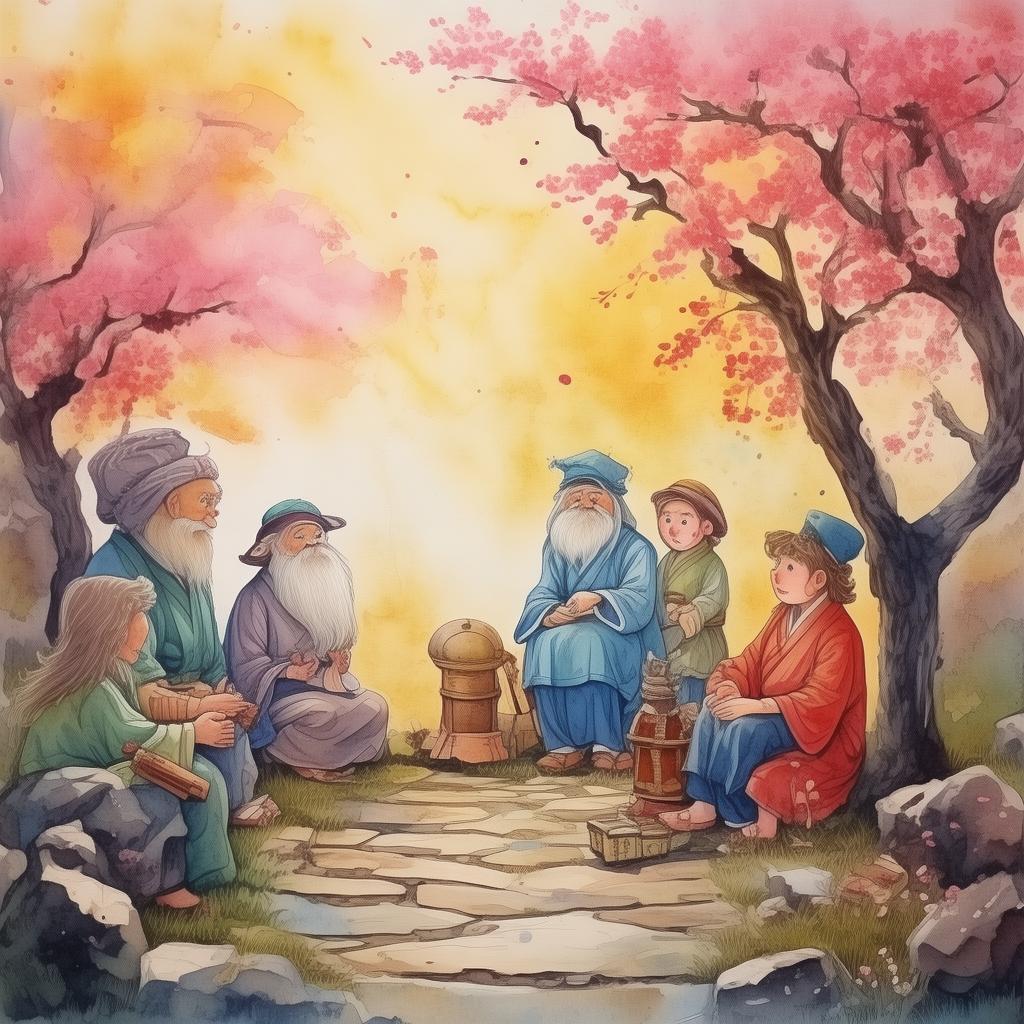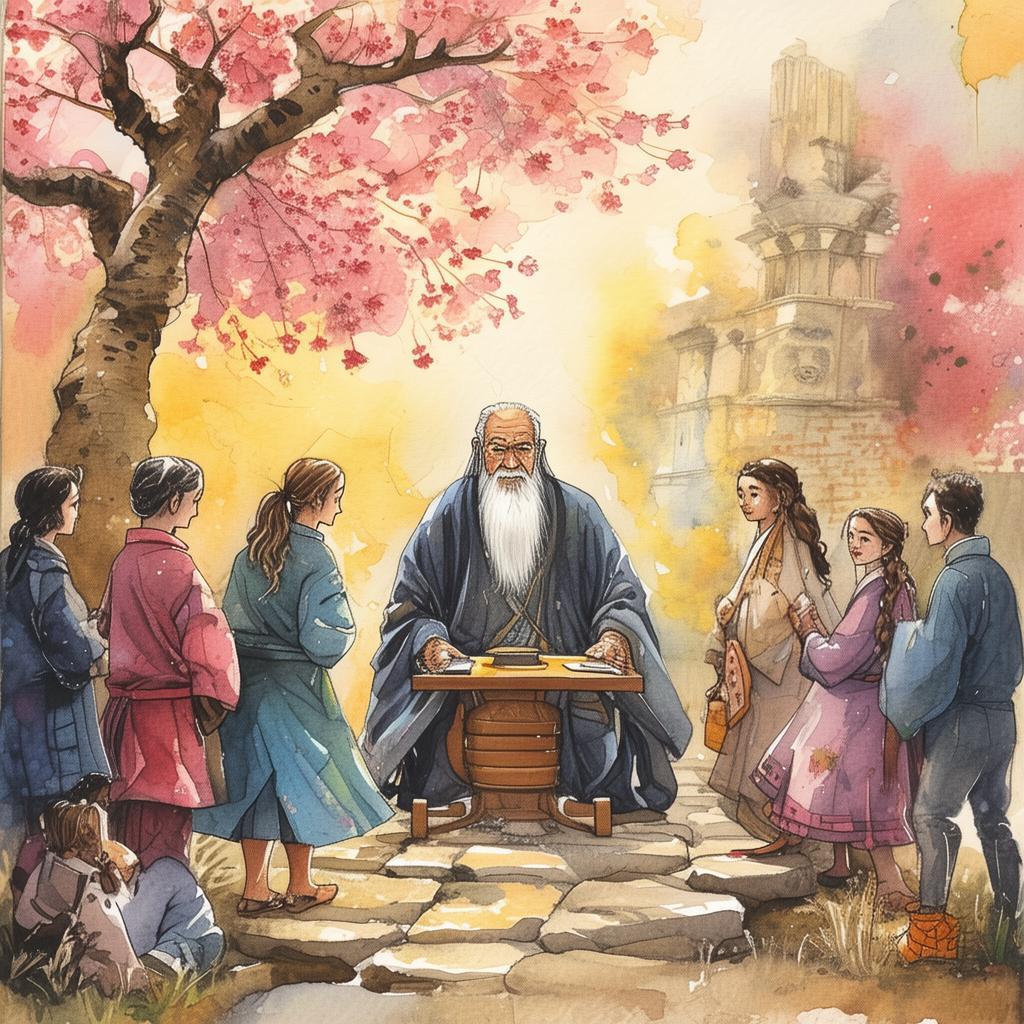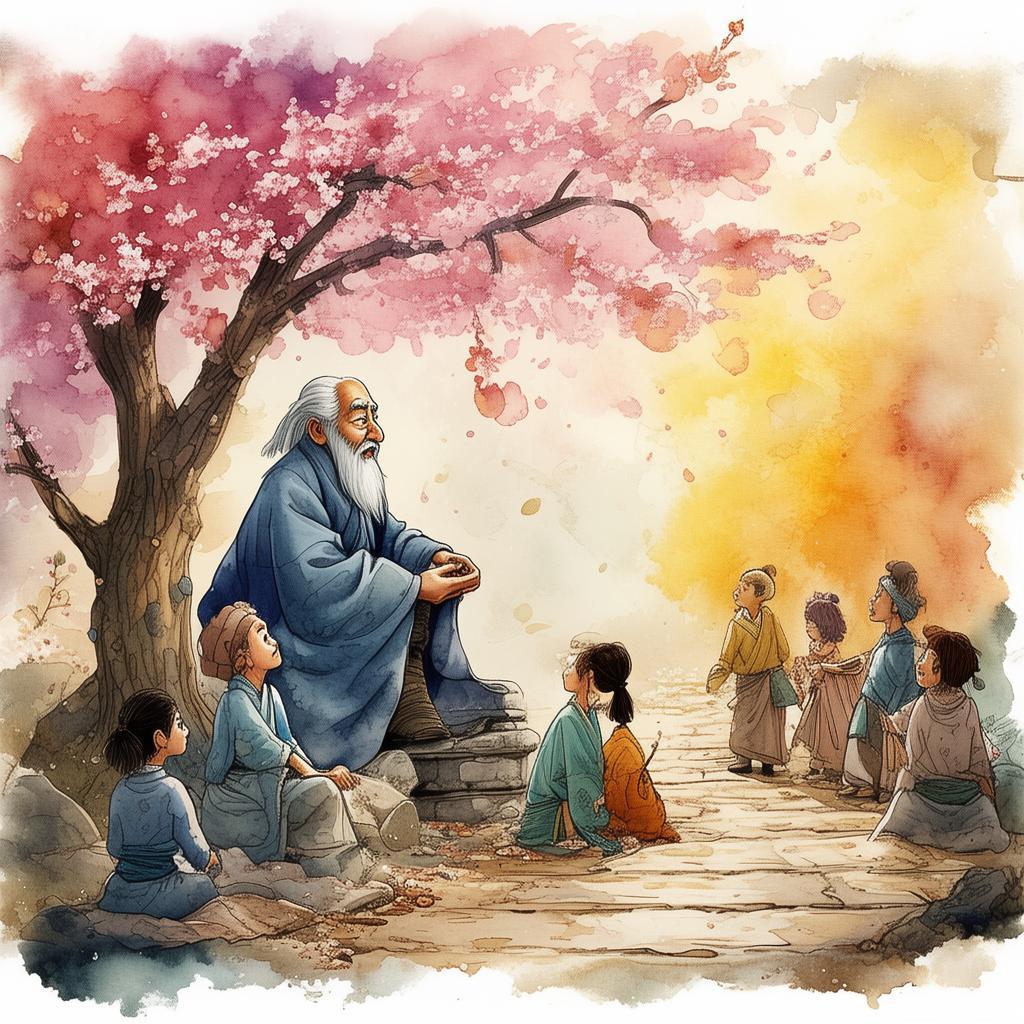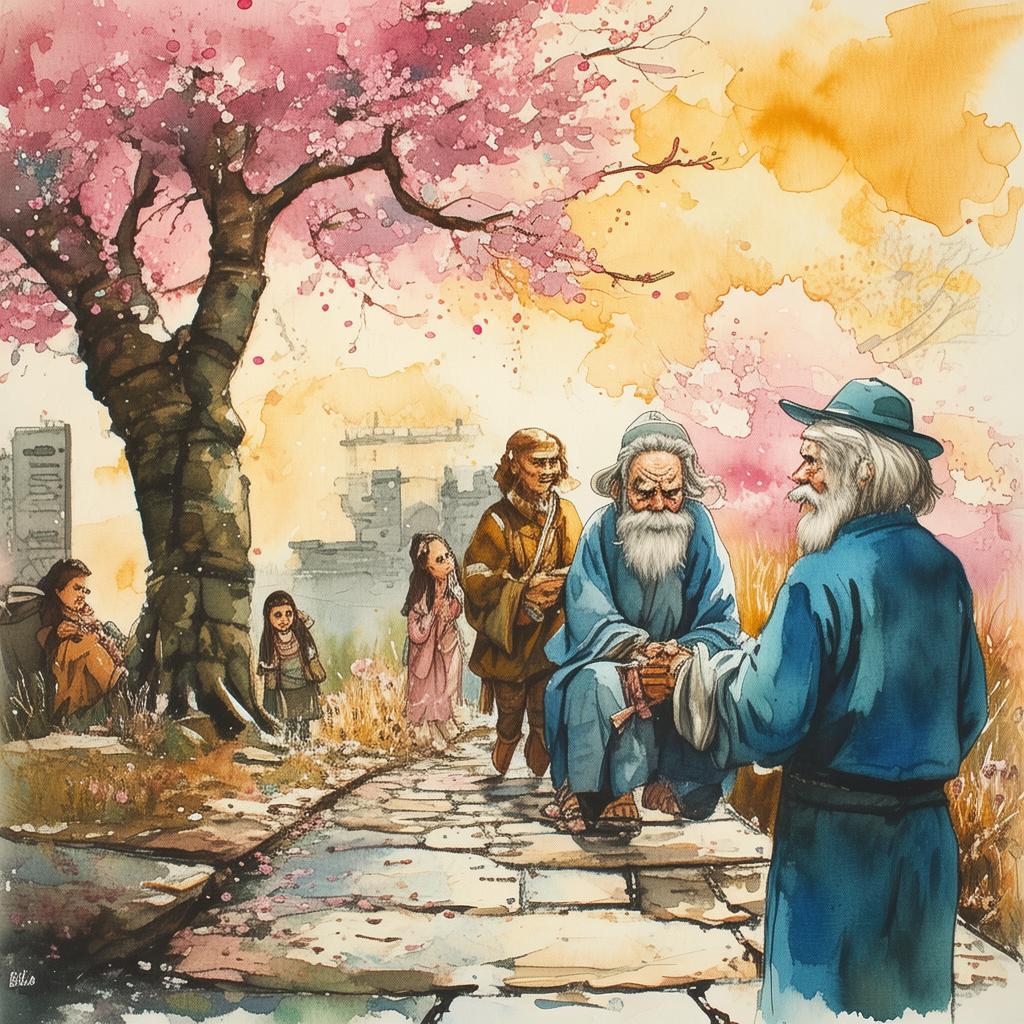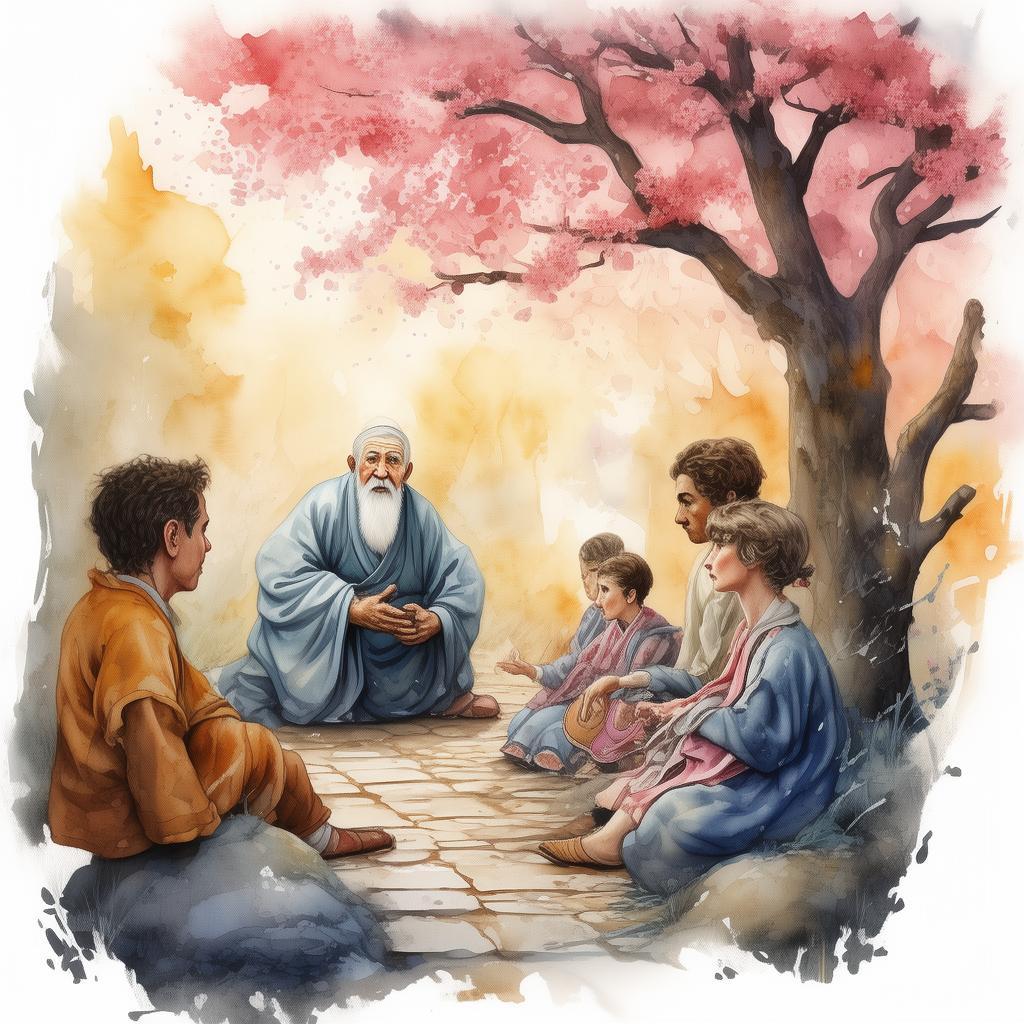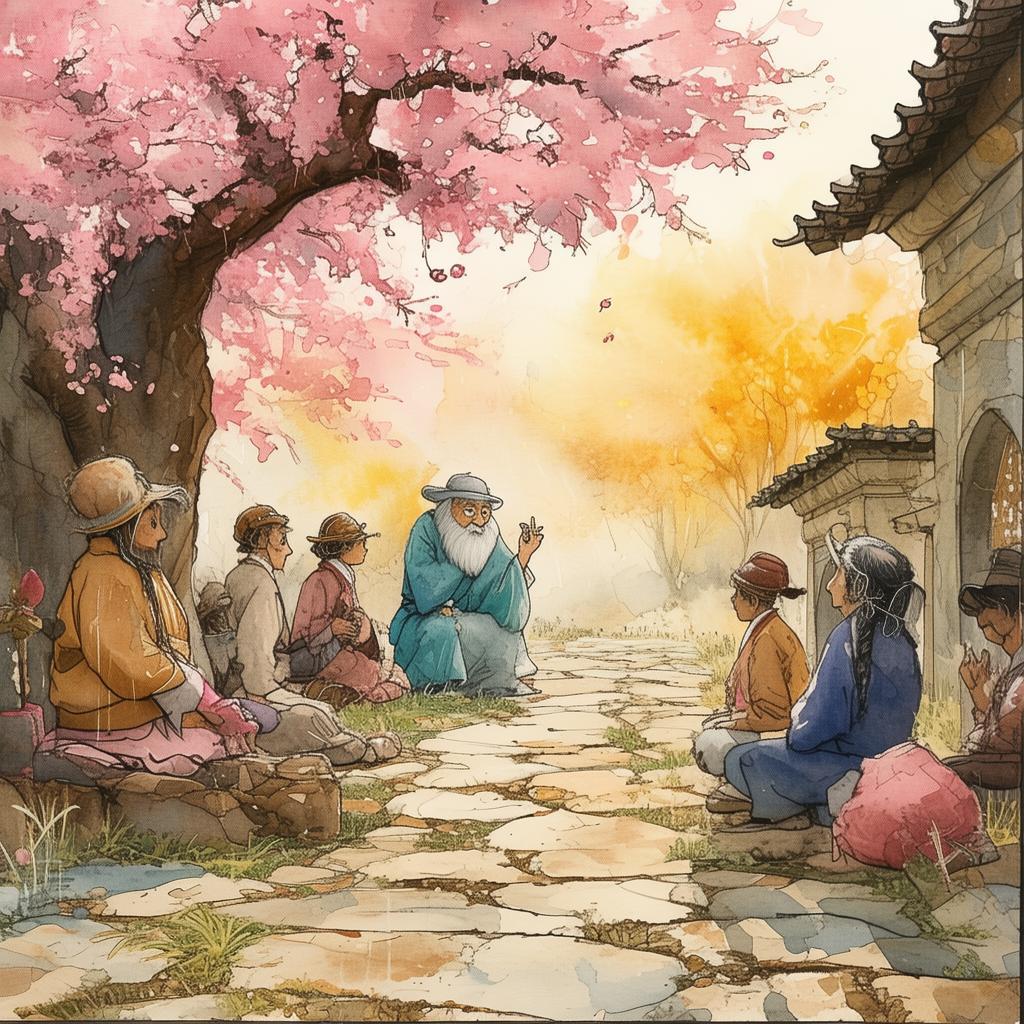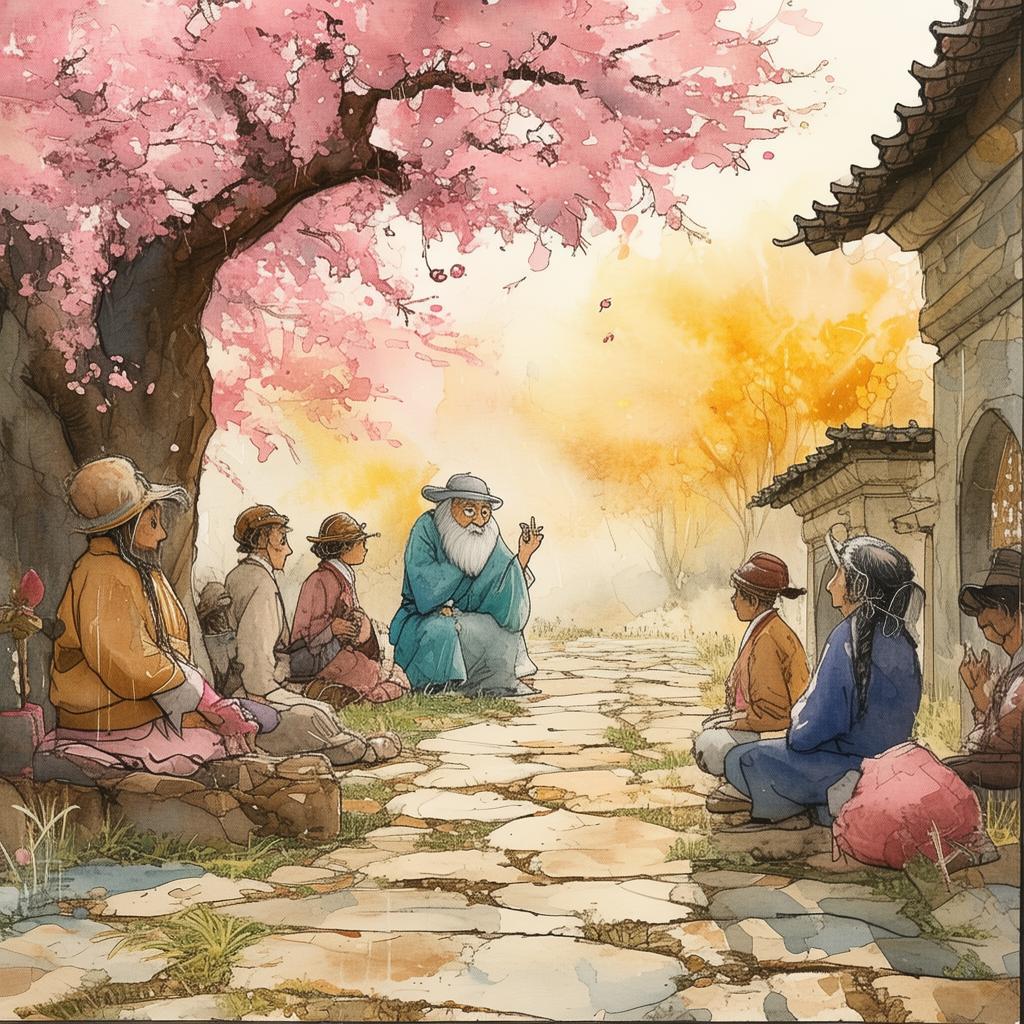The Enigma of the Centennial Maze
In the remote village of Jingyuan, nestled between rolling hills and dense bamboo groves, stood the ancient home of the Li family. The house, a testament to centuries of history, was known for its labyrinthine maze that had been passed down through generations. Whispers of the maze's origins were as enigmatic as the proverbs that adorned the walls of the home, each one a puzzle waiting to be solved.
The most famous of these proverbs was the one that adorned the grand entrance: "The path to wisdom is not straight, but winding." It was a riddle to the villagers, a challenge to the scholars, and a legend to the children.
In the year of the centennial, a young scholar named Ming heard tales of the maze and its legacy. Driven by curiosity and a desire to understand the ancient wisdom, Ming resolved to solve the maze's mysteries. He was a brilliant mind, but wisdom, he believed, was not just in the intellect; it was in the heart.
Ming set out early one morning, his only companion a simple lantern. The maze was a vast network of paths, each one a potential path to enlightenment. The first challenge was to find the starting point, a task that seemed simple but was fraught with complexity.
As he ventured deeper into the maze, Ming encountered the first proverb: "The wise man does not seek to be understood, but to understand." This was a test of his humility, and he paused, reflecting on his own desires and ambitions. He realized that true wisdom lay in self-awareness and understanding others.

The maze twisted and turned, and Ming found himself at a crossroads. One path led to the left, the other to the right. He chose the left, only to find that it led him back to the crossroads. Frustrated, he realized that the maze was not just a physical challenge but a metaphor for life's journey.
He encountered more proverbs, each one a lesson in patience, courage, and resilience. "The wise man does not fear the storm, but the calm before the storm," he read, and he understood that the greatest challenges often came in the quiet moments.
As the hours passed, Ming grew weary but determined. He reached a chamber where the walls were adorned with ancient scrolls. Each scroll contained a riddle, and Ming knew that solving these would be the key to unlocking the maze's secrets.
The first scroll read: "I have cities, but no houses. I have mountains, but no trees. I have water, but no fish. What am I?" Ming pondered the riddle, and it dawned on him that the answer was "the map." The map was the guide, the key to navigating the maze.
With newfound clarity, Ming continued his journey. He encountered a series of trials, each testing his character and resolve. He learned that wisdom was not just about knowledge but about the ability to adapt and grow.
Finally, Ming reached the heart of the maze, a chamber where the ancient scroll of the Li family's legacy lay. As he read the scroll, he discovered that the maze was not just a physical structure but a metaphor for the human mind. The paths were thoughts, the walls were biases, and the proverbs were lessons.
The final proverb read: "The wise man seeks not to conquer the world, but to conquer himself." Ming realized that the greatest legacy was not the maze itself, but the journey he had undertaken. He had discovered that wisdom was not a destination but a continuous journey of self-discovery.
As Ming emerged from the maze, the villagers gathered around him, their eyes wide with wonder. Ming shared his experiences and the lessons he had learned, and the villagers were inspired by his journey.
The centennial maze, once a source of intrigue and mystery, had become a symbol of wisdom and self-discovery. Ming had not only solved the maze but had also unlocked the legacy of the Li family, a legacy that would live on through the ages.
And so, the story of the centennial maze became a legend, a tale of courage, wisdom, and the power of self-discovery. The maze remained, a silent guardian of ancient proverbs, waiting for the next scholar to embark on a journey of enlightenment.
✨ Original Statement ✨
All articles published on this website (including but not limited to text, images, videos, and other content) are original or authorized for reposting and are protected by relevant laws. Without the explicit written permission of this website, no individual or organization may copy, modify, repost, or use the content for commercial purposes.
If you need to quote or cooperate, please contact this site for authorization. We reserve the right to pursue legal responsibility for any unauthorized use.
Hereby declared.
